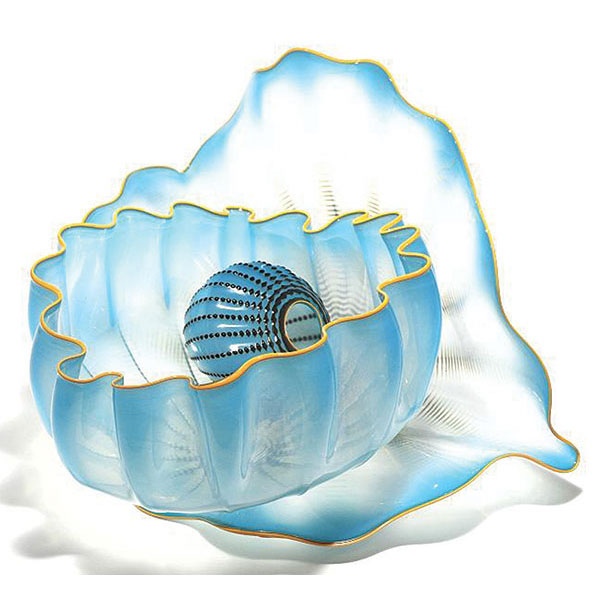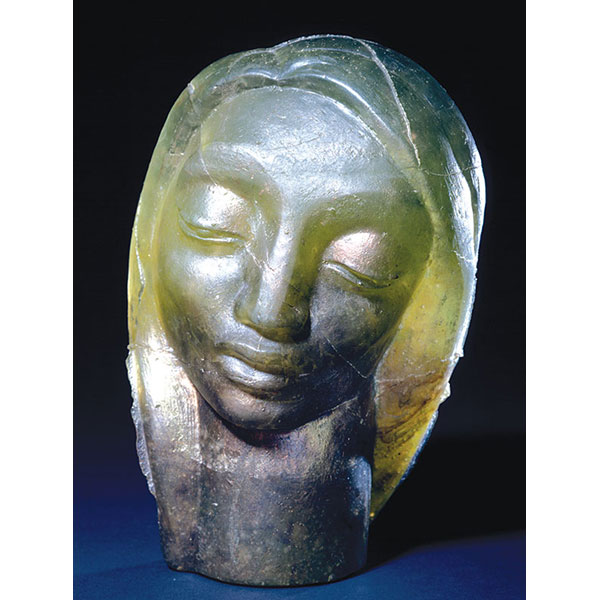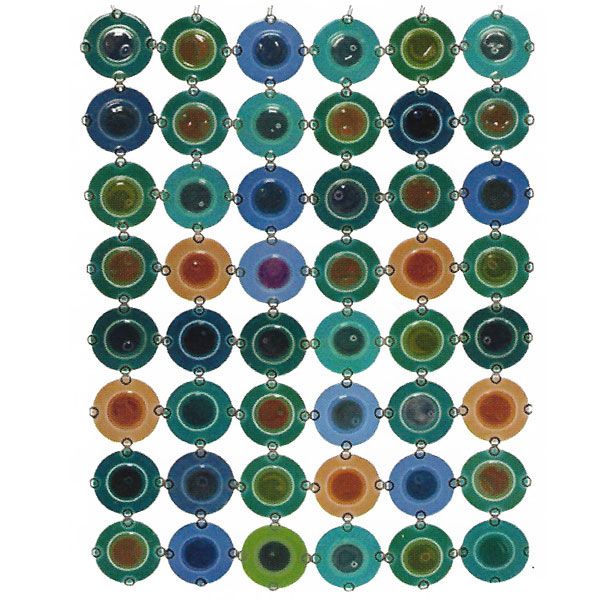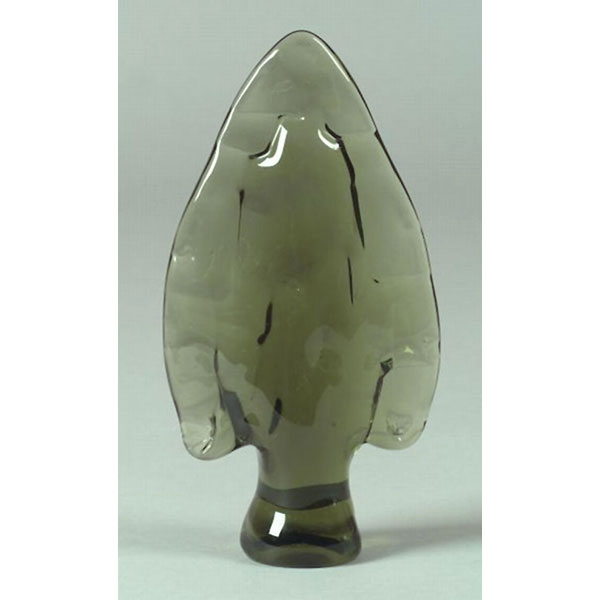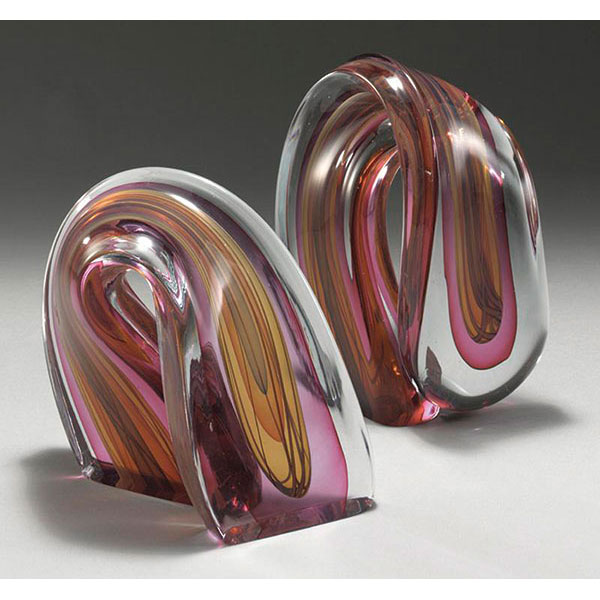Identification Guides
Studio Glass, 1970−2000
From 1900 to the 1950s, most glass was made to be useful, not just decorative. Even Gallé’s decorative pieces were intended to be used, perhaps as a vase to hold flowers. Many of Tiffany’s iridescent wares were meant to set the table. And Depression glass could be used as an inexpensive second set of colored dinnerware.
By the 1970s in the United States, studio glassmakers—artists who work independently of a factory—began to use glass in new ways, incorporating traditional techniques, like free-blown shaping and engraving, with modern materials like nuts and bolts, metal plates, and plastic. Instead of cups, bowls, and vases, studio glassmakers create figures, sculptures, and even wall hangings.
